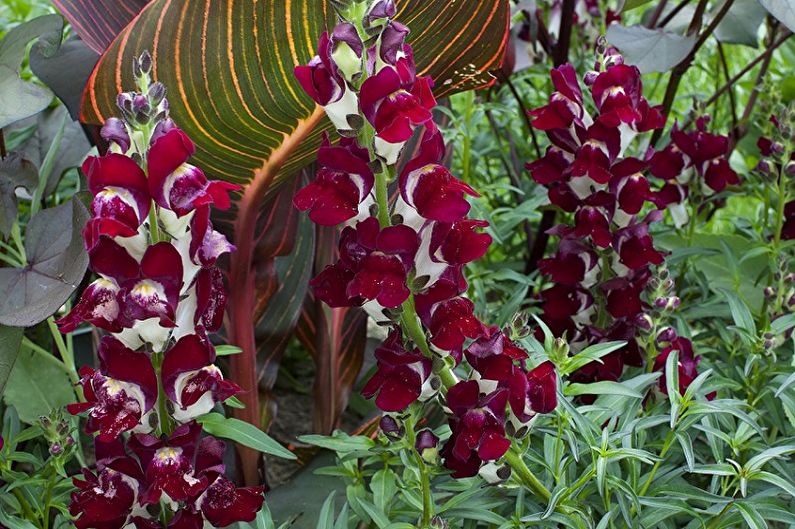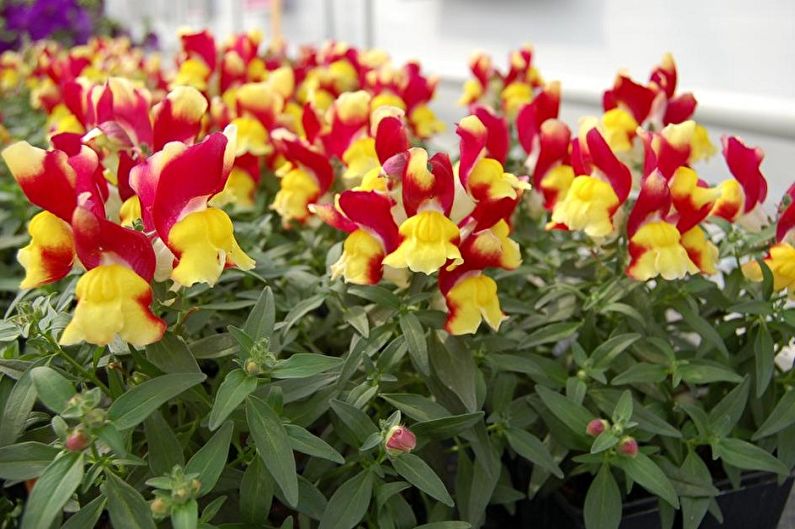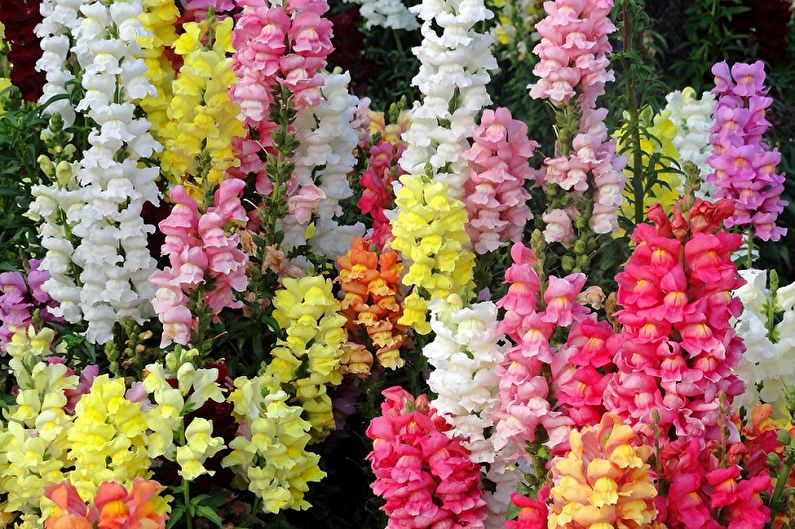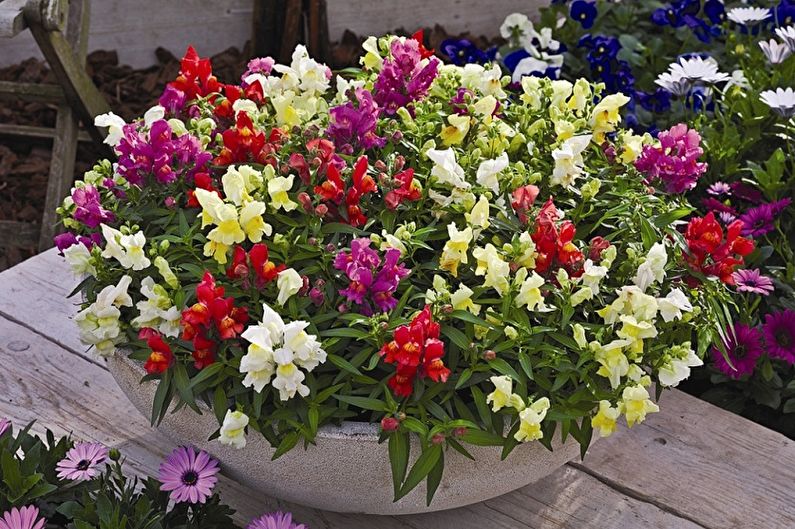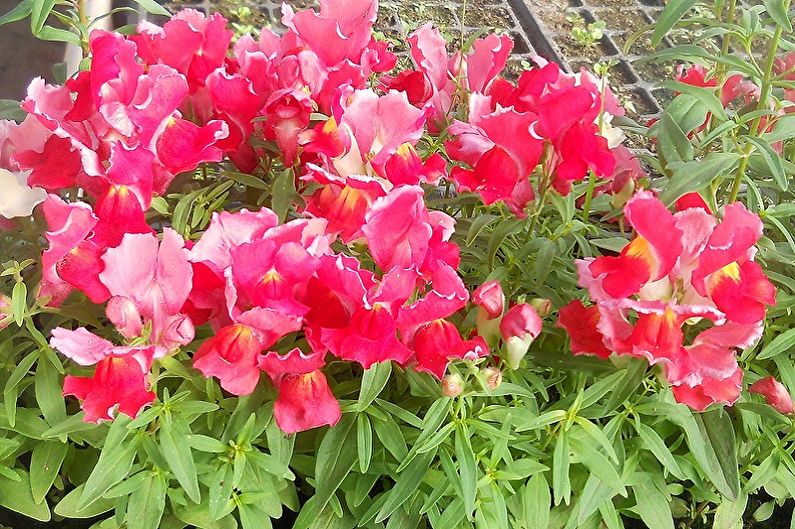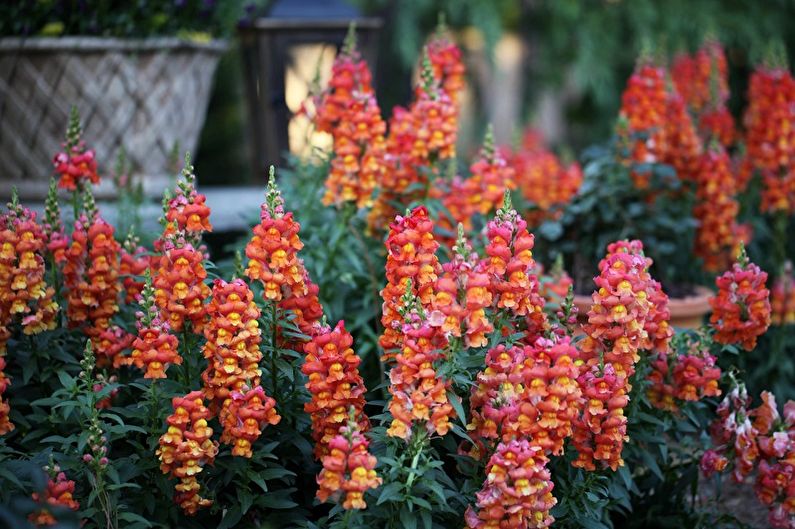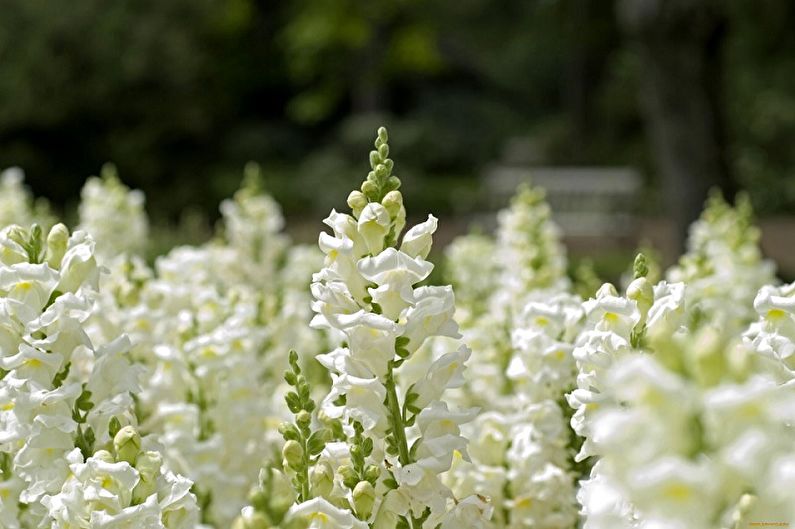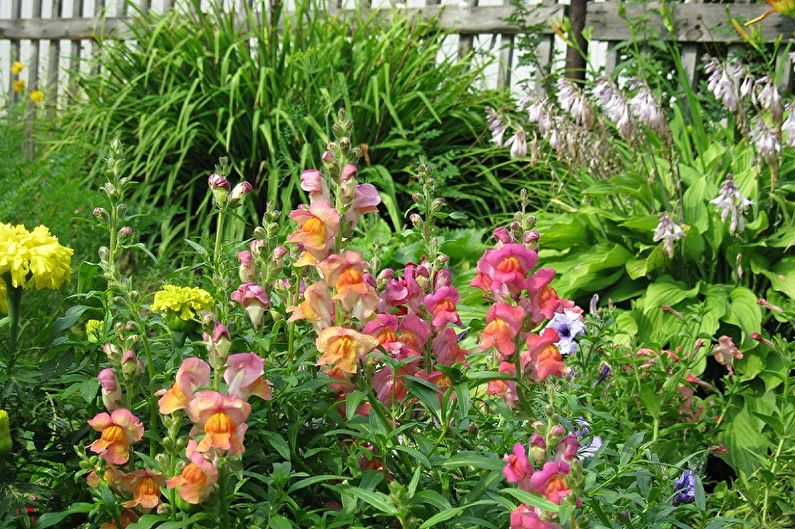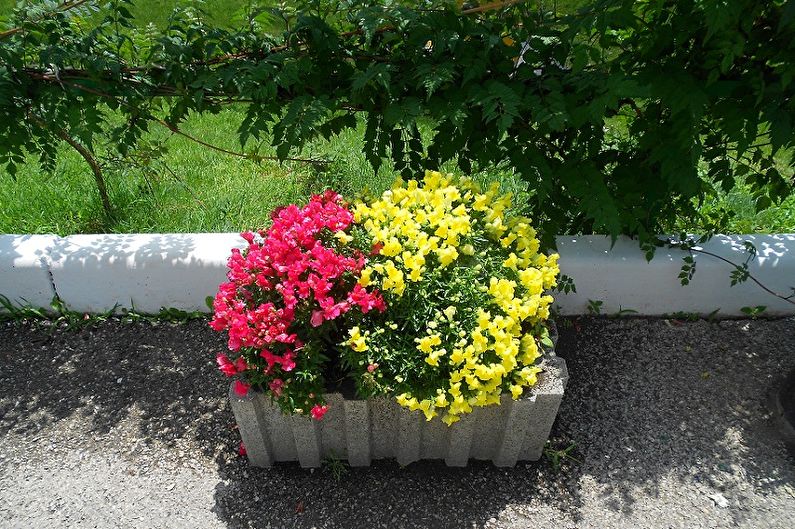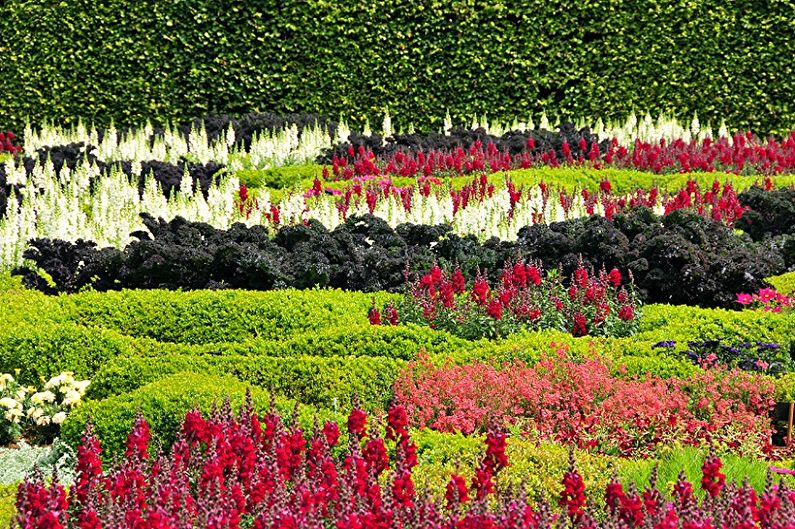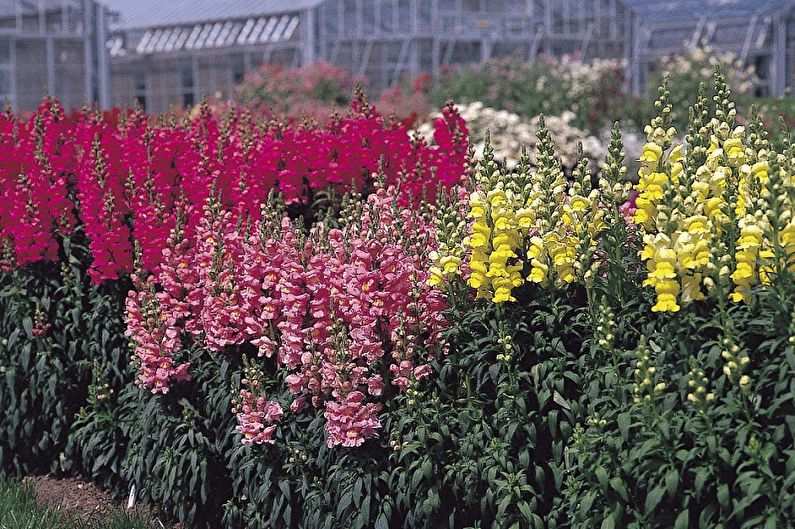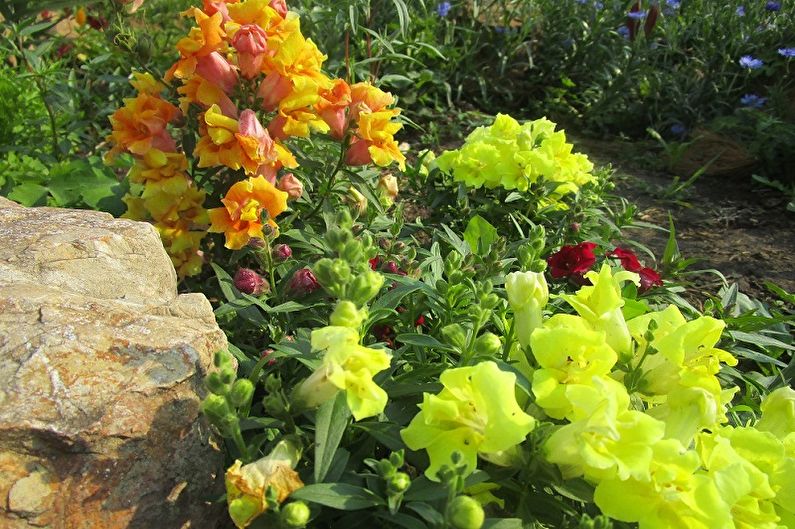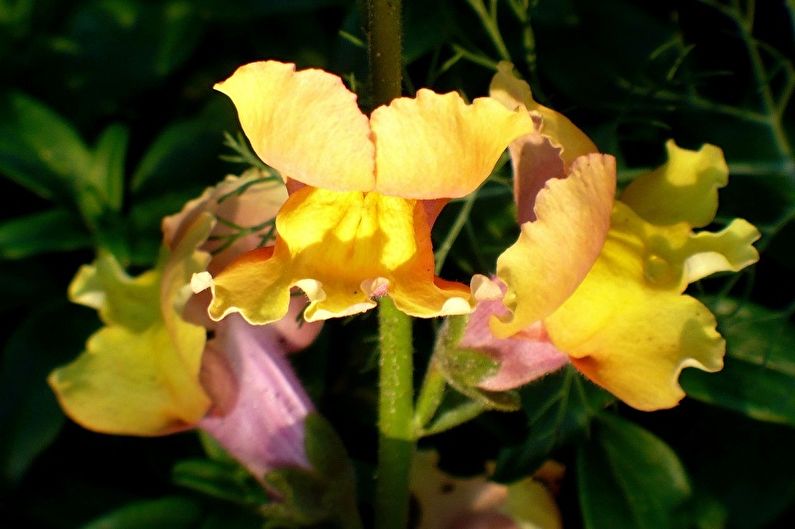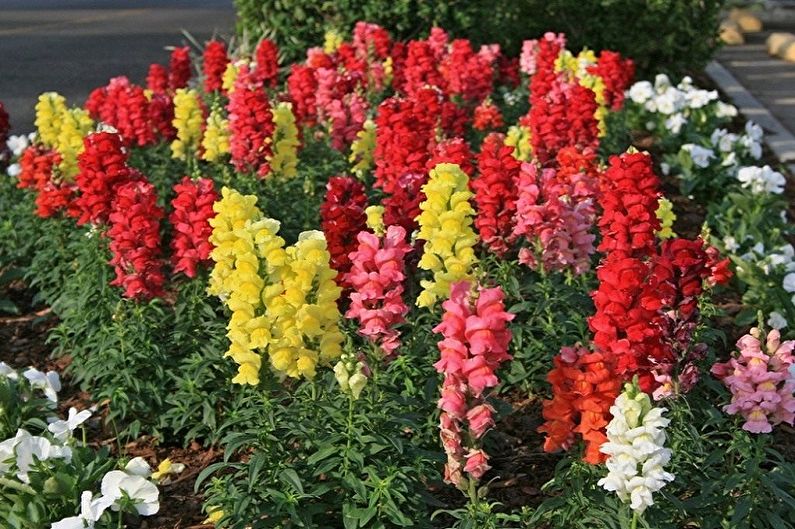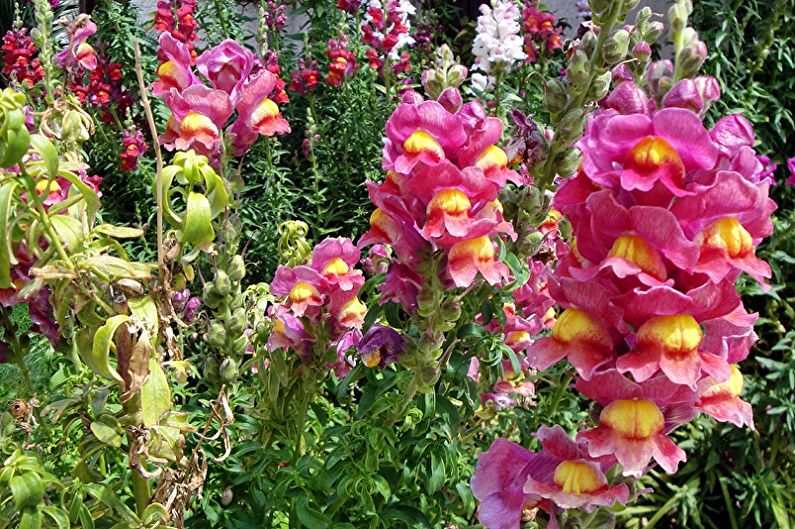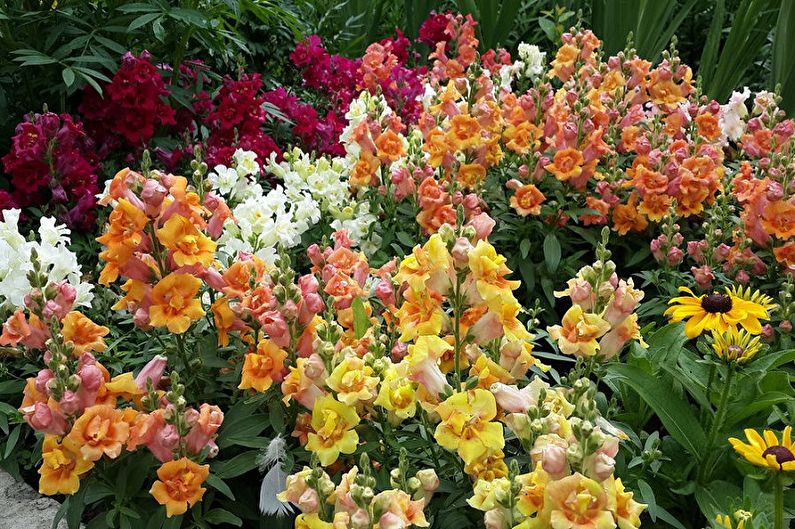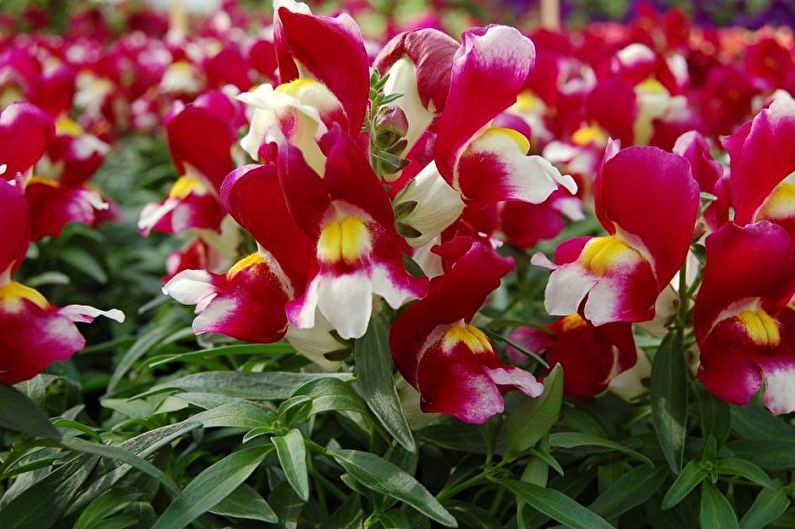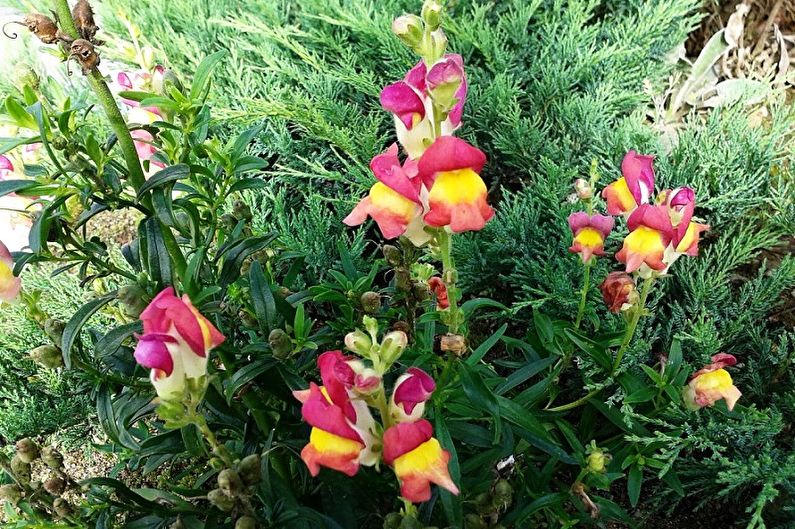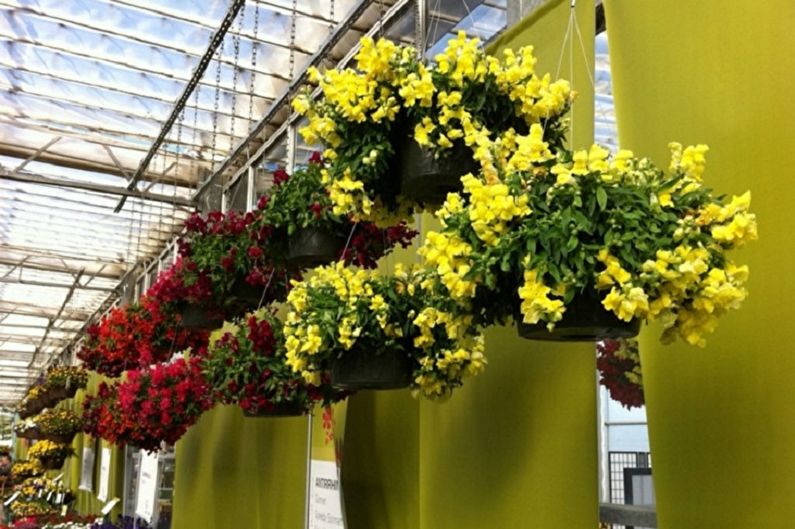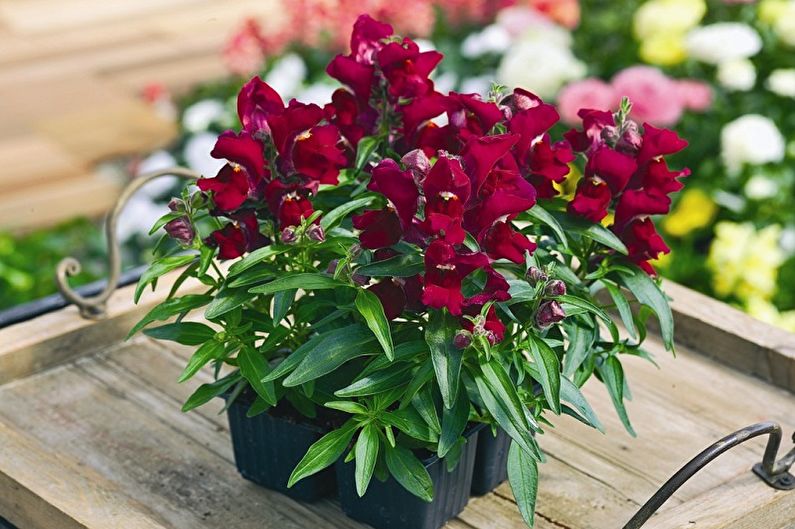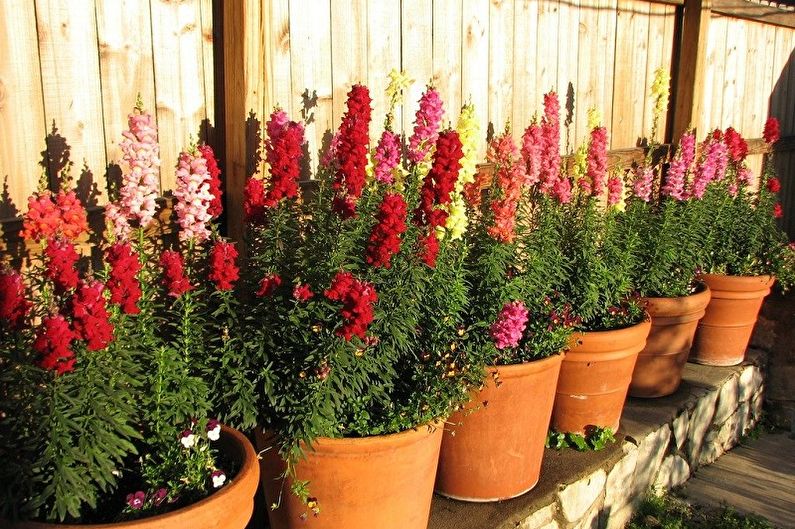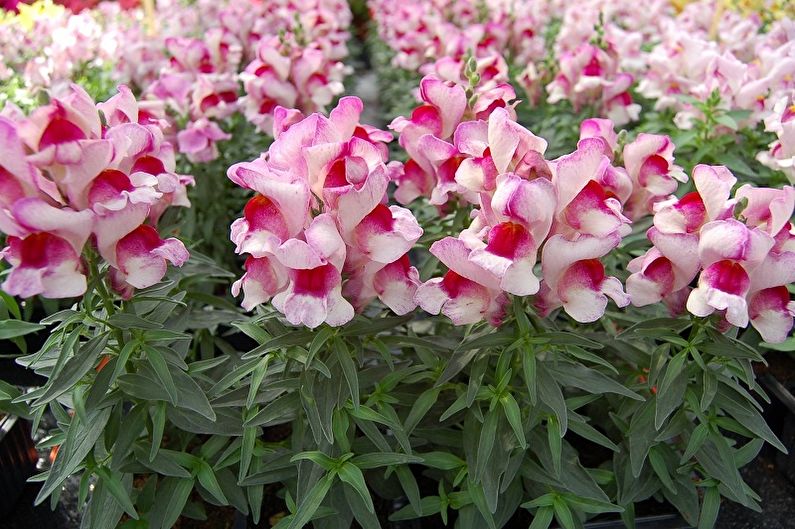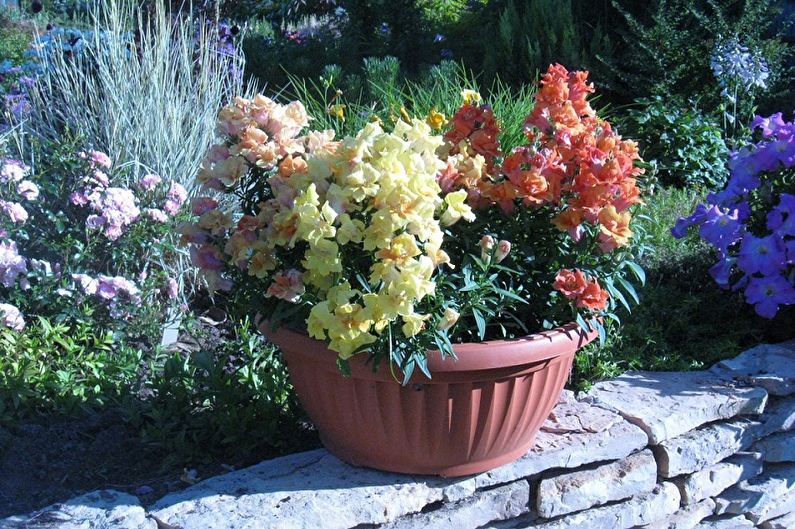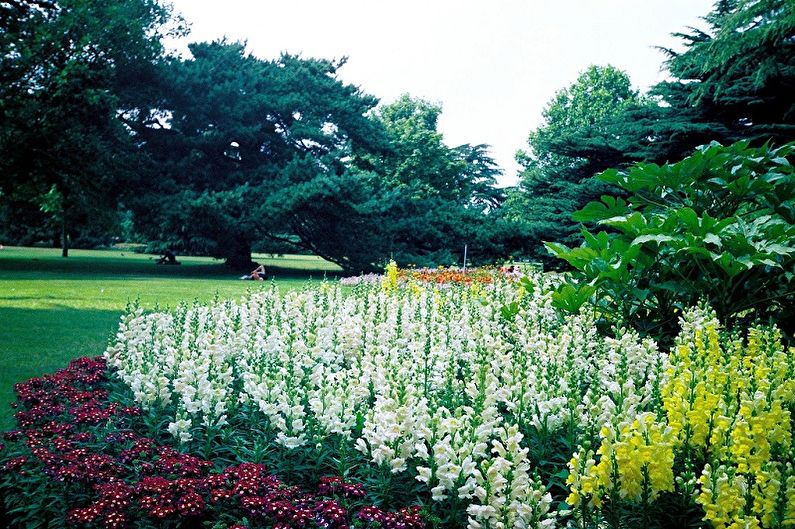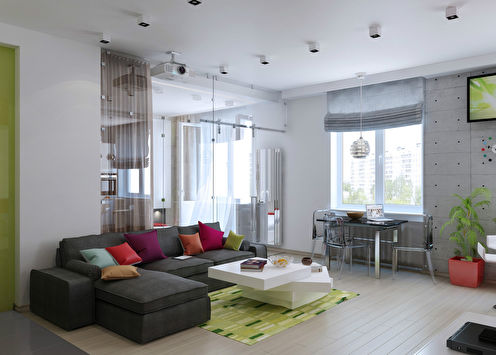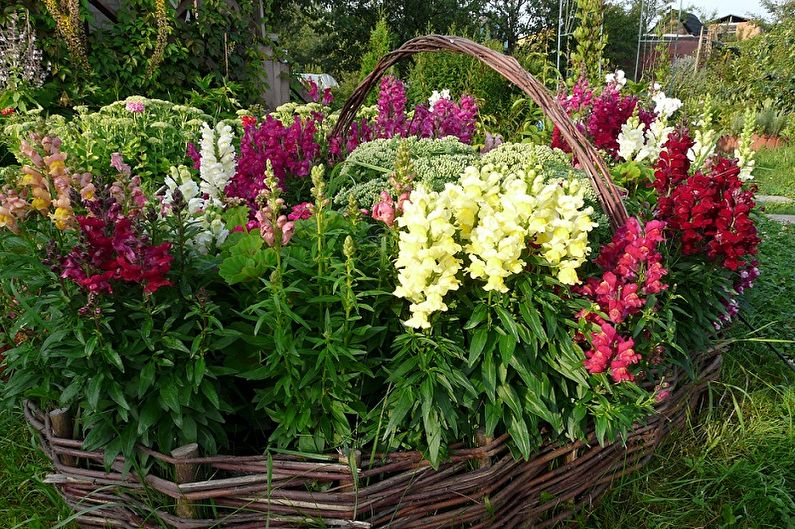
Snapdragon has dozens of names around the world. Somewhere it is called "dogs", somewhere "a biting dragon." Botanists use the definition of "antirrinum" - "nose-like." Florists love it for its brightness, saturation and variety. In nature, there are dozens of species, and even more bred in the process of long-term selection work. Snapdragon is ideal for landscaping balconies and garden seedlings, it can be grown in a flowerpot or flower bed. Some high varieties are especially valuable for florists, because even cut antirrinum continues to blossom and bloom for up to two weeks.
General characteristics
Snapdragon hails from Asia, America and the Mediterranean. In floriculture, it began to be actively used in the sixteenth century. Especially botanists fell in love with the large antirrinum, growing in North America and Southern Europe.
Although the snapdragon is by nature a perennial plant, it is planted as an annual plant in farming and horticulture, less commonly as a biennial. It has high straight and branched stems, whose rounded shoots are covered with small hairs on top.
From below, leaves grow opposite each other, above - alternately. Large colorful flowers are collected in inflorescences-brushes. They can be open or closed, simple or terry. The color is completely different, including two-tone varieties. Most often there are yellow, white, red and pink antirrinums.
The flowers of the antirrinum are two-lipped and irregular in shape. That is what they resemble the open mouth of a lion or dragon. A pleasant aroma during flowering will delight owners of seedlings, as well as attract bees and butterflies.
The peak of selection work began in Germany in the 10th century. Varieties differ in length, flower shape, leaf shape, appearance and growth characteristics in general. Florists appreciate snapdragon for variety and unpretentiousness.
Snapdragon flowers are still used in folk medicine. An infusion based on them is used as an additive in the treatment of intestines and some liver diseases, with headaches and shortness of breath. Tonics and decoctions are used to care for problem skin.
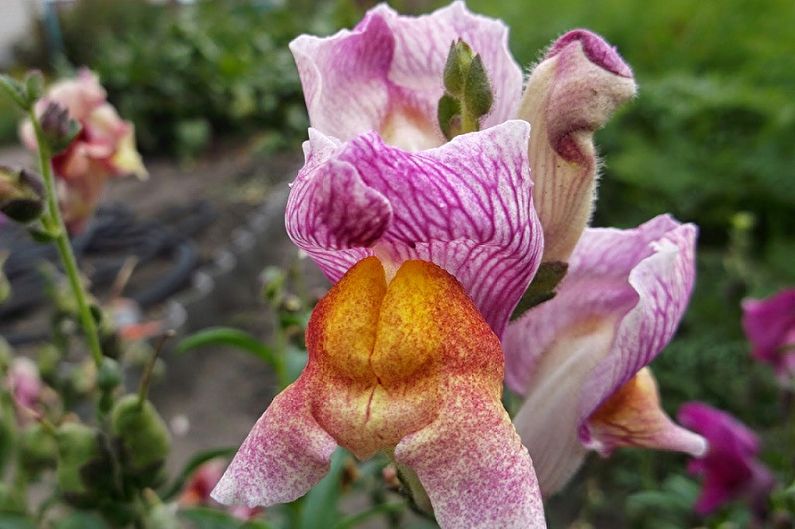
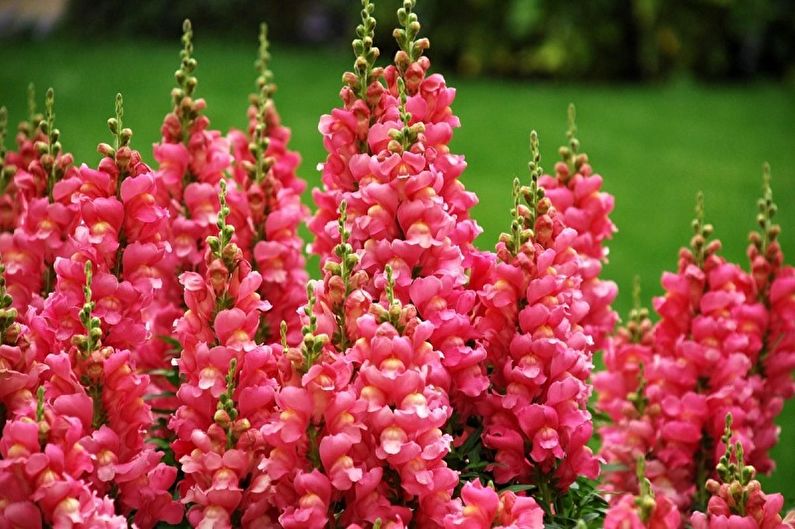
Types of snapdragon
Selection of snapdragons or antirrinum was actively engaged in the nineteenth century. Now there are about a thousand plant varieties that are classified according to different criteria. Many of them are extremely decorative. It is most convenient to use the classification by height.
High or cut - from 70 cm
Some species can reach a length of more than a meter. Mostly they have a pyramidal shape and bright saturated flowers. In addition to modern breeding varieties, there are more classic ones: pale greenish Alaska, pink Anna German, juicy yellow Canary, deep Ruby, Rockets of delicate shades and terry Madame Butterfly. Most often, these varieties are not used in the garden, but for bouquets, but sometimes they are planted in complex compositions, like vertical accents.
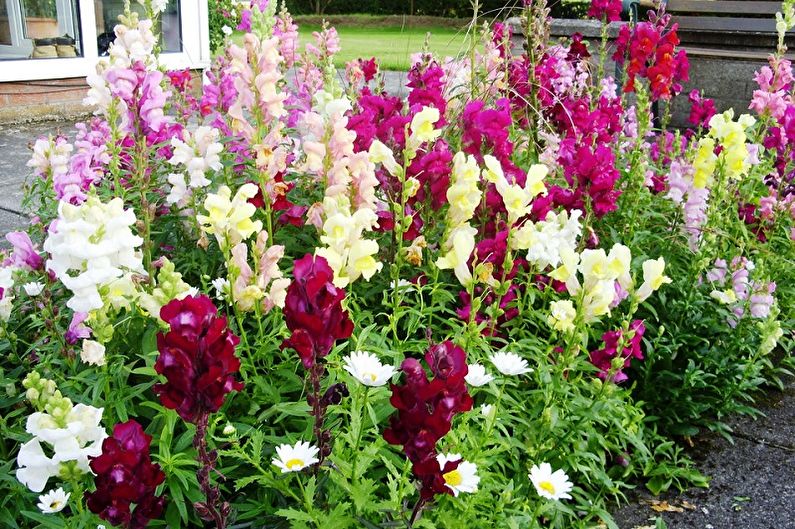
Half or medium height - 40-60 cm
These are universal classic varieties and hybrids. The structure of such species is more complex: the main shoot rises above the shoots of the second row. Interesting and spectacular representatives are golden, burgundy or white Monarchs, pinkish Lipstick Silver, enriched Rubi, unusual two-color Tequila Sunrise, variegated Bizari and unusual contrasting German Day and Night.
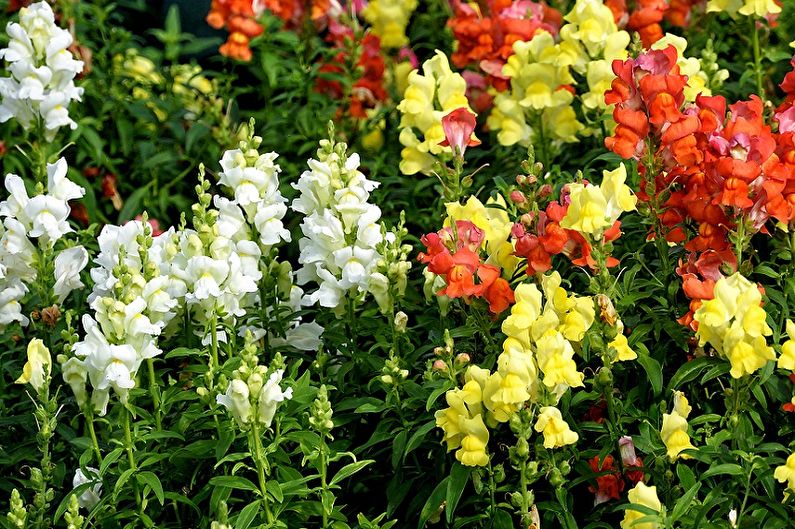
Low - 25–40 cm
These are small decorative groups Chimes, Kimozi, Tip-Top, Floral Showers and others. They are often planted to decorate rock gardens, carpet flower beds, balconies and rabatki. They feel good in containers and decorative hanging baskets.
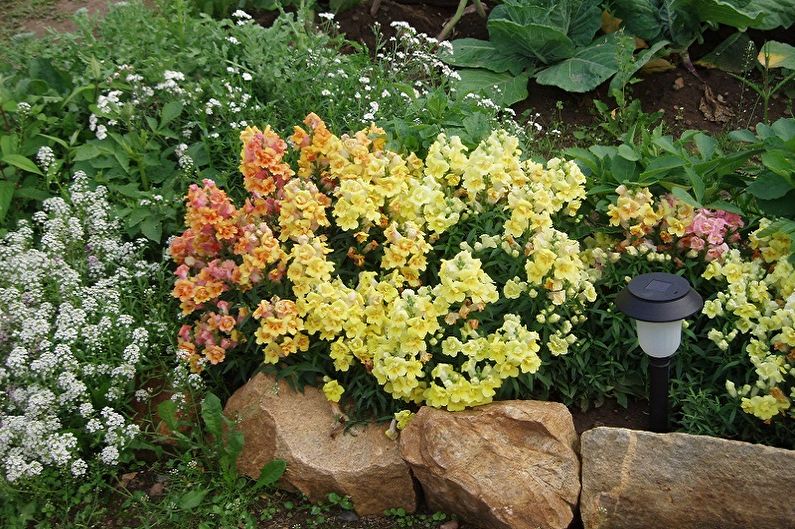
Miniature Dwarf - 15–20 cm
Dwarf varieties are distinguished by a dense small inflorescence, which looks like it was flattened on top. Low-growing ones resemble reduced universal shrubs with loose inflorescences.
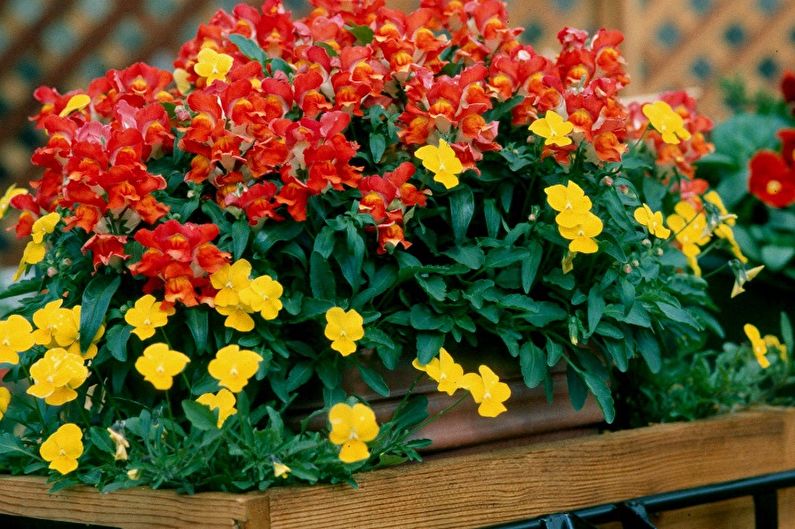
Caring for snapdragons
For successful growth and abundant flowering snapdragon requires light fertile soil. Periodically, it needs to be fed, and most importantly - regularly watered. But do not overdo it, because with an excess of water, even the most hygrophilous plant dies.
Peat, sand and organic matter must be added to clay soil so that it is loose and moisture does not stagnate. In the sandy soil is added chernozem, sheet soil and humus. The structure should be such as to retain water well.
Watering is done as needed when the topsoil dries. Sawdust, humus or freshly cut grass are suitable for mulching.
Freshly transplanted plants can not be fed so as not to burn the rhizome. Mineral fertilizers with trace elements are introduced only after complete adaptation.
Antirrinum tolerates small frosts to -5C. It blooms until the first significant frost. It is important to immediately remove faded inflorescences. So you can stretch the flowering period, and at the same time it prevents putrefactive and fungal processes.
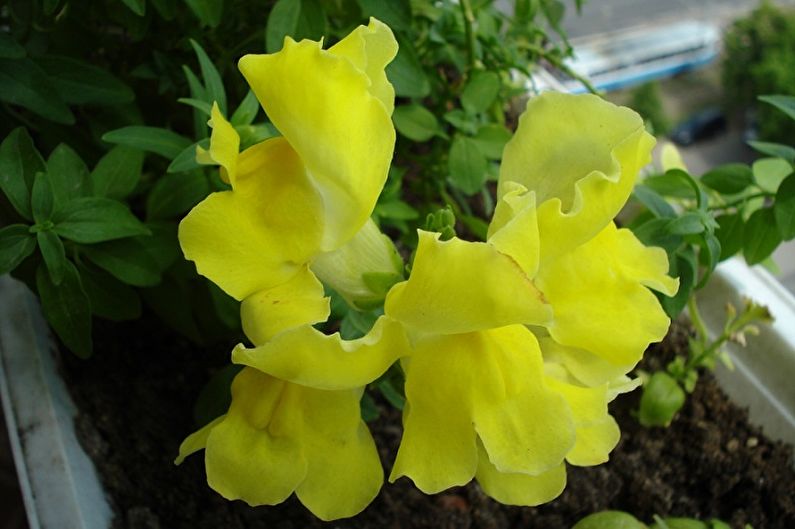
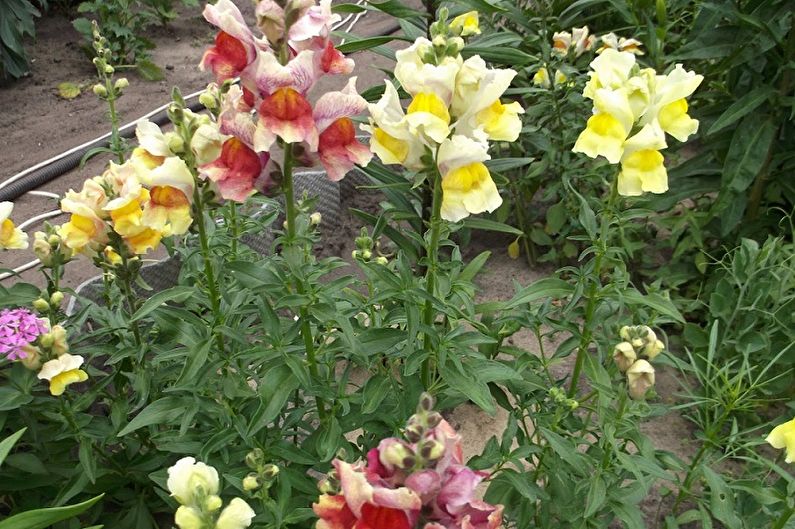
Transplantation and reproduction
There are two ways to breed snapdragon: dividing the bush and using seedlings. A unique species feature is the ability of seeds to be stored in the ground for several years, and then germinate independently.
Seedlings can significantly accelerate the growing process. Seeds are planted in a special box with drainage holes. Pebbles, expanded clay or any other drainage aggregate is poured at the bottom. A light, loose substrate based on turf, peat and sand with the addition of ash and humus is used as the basis. Previously, the soil is poured with a weak solution of potassium permanganate.
Disinfected seeds are mixed with sand and sown in uniform paths with an interval of several centimeters. From above they are covered with a small amount of soil and sprayed with water. The container is tightened with a film or covered with glass. It needs to be aired every day, moistened - as it dries, stored - at a temperature above + 17C. The first shoots are noticeable within a week and a half. A week later, the film can be removed.
When the first couple of leaves appear, seedlings can be spread in flowerpots using peat pots. Intermediate transplanting in the future contributes to bushiness and better flowering.
By the end of spring, seedlings can be transplanted into the ground. Ideal soil is loam or sandy soil. It performs two main options: water permeability and ventilation. Ash, complex fertilizers, humus and peat contribute to flowering. Also, for intensive and prolonged flowering, you need a lot of sun.
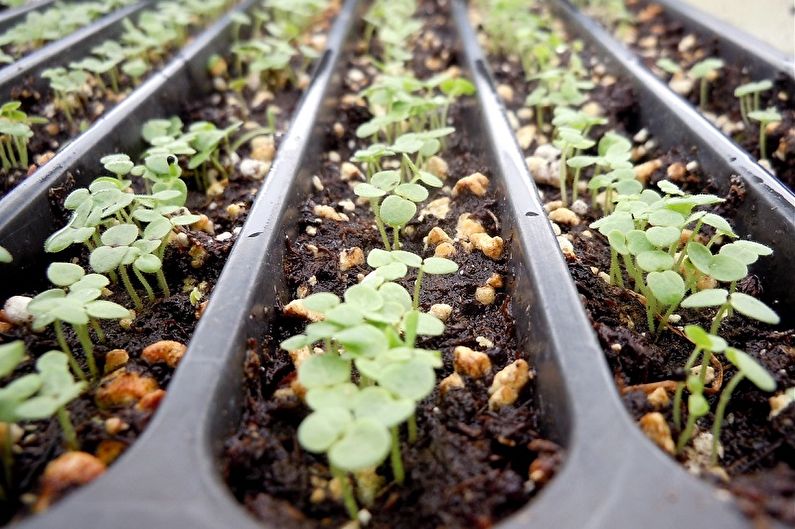
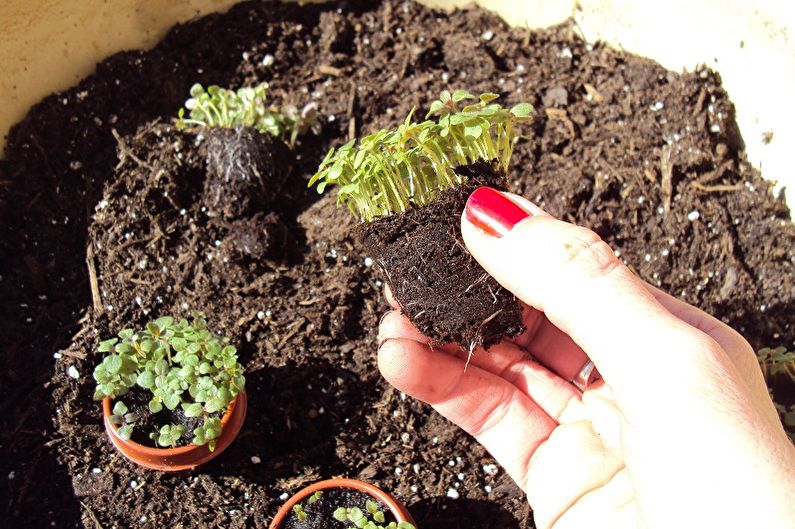

Pest and Disease Control
A strong and healthy snapdragon is not susceptible to disease and pest attacks. But sometimes problems do happen.
Most of all, the antirrinum is afraid of stem scoops, aphids, ticks, thrips and a mining fly. To prevent pests, you must initially plant flowers at a distance and timely weed them from weeds.
Stem scoops are caterpillars that destroy the stem. If they appear, you need to cut and burn damaged plants, remove all weed grass around and process healthy flowers with chlorophos. Preventive treatment with insecticides is carried out until the fall.
The root system is affected by nematodes and fungal diseases. A lot of problems cause an excess of moisture and insufficient soil permeability. Mosaic appears as spots on leaves and petals. Rust affects the entire plant. At the first sign, Bordeaux fluid and its analogues are used. After a week, you need to repeat the treatment. Fungicides are also used periodically.
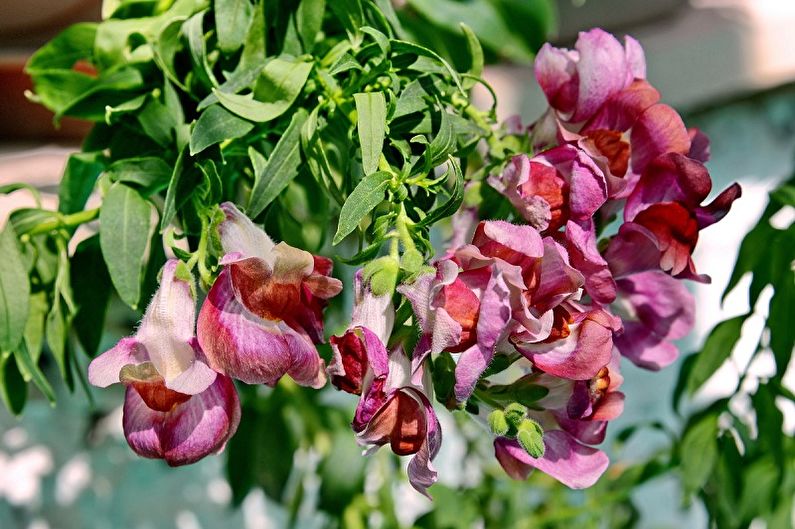
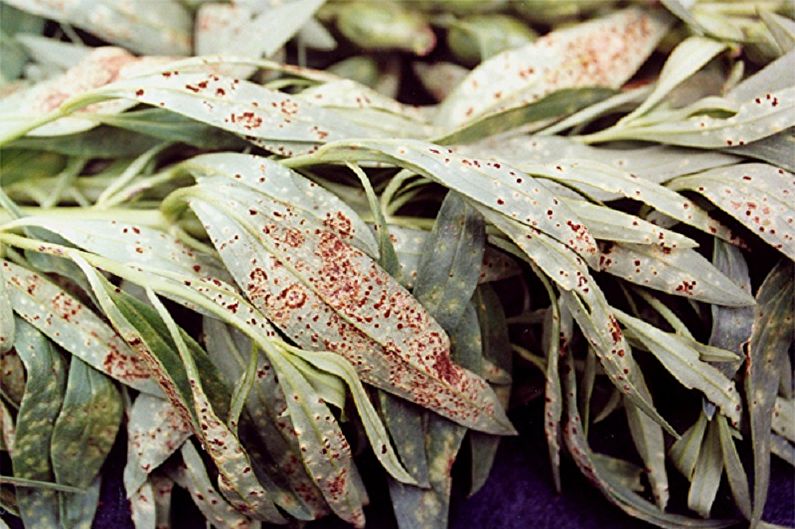
Snapdragon - photo
We have compiled a selection of photographs of snapdragon to help you navigate your choice, replenish your green corner or garden seedlings and create a harmonious composition. Enjoy watching!
